ActiveOutdoorsOutdoor TechUnistellar Odyssey review: high-tech stargazing without the hassleThe mid-range Unistellar Odyssey smart telescope is about getting a better value experience than budget models without spending big on luxury featuresWhen you purchase through links on our site, we may earn an affiliate commission.Here’s how it works.(Image credit: Jamie Carter)T3 VerdictWith a peerless build quality, easy-to-store and use design, and deep black images even in light pollution, the sleek Unistellar Odyssey is perfect if you’re after a top-draw smart telescope but don’t find its lack of an eyepiece.Reasons to buy+Excellent images from light-polluted cities+Superb build quality+Easy-to-use app+Lighter than the step-up option+Great value for moneyReasons to avoid-Proprietary tripod adds unnecessary expense-Lacks resolution compared to step-up-Planet images are very basic-Battery lasts five hoursWhy you can trust T3Our expert reviewers spend hours testing and comparing products and services so you can choose the best for you.Find out more about how we test.
ActiveOutdoorsOutdoor TechUnistellar Odyssey review: high-tech stargazing without the hassleThe mid-range Unistellar Odyssey smart telescope is about getting a better value experience than budget models without spending big on luxury featuresWhen you purchase through links on our site, we may earn an affiliate commission.Here’s how it works.(Image credit: Jamie Carter)T3 VerdictWith a peerless build quality, easy-to-store and use design, and deep black images even in light pollution, the sleek Unistellar Odyssey is perfect if you’re after a top-draw smart telescope but don’t find its lack of an eyepiece.Reasons to buy+Excellent images from light-polluted cities+Superb build quality+Easy-to-use app+Lighter than the step-up option+Great value for moneyReasons to avoid-Proprietary tripod adds unnecessary expense-Lacks resolution compared to step-up-Planet images are very basic-Battery lasts five hoursWhy you can trust T3Our expert reviewers spend hours testing and comparing products and services so you can choose the best for you.Find out more about how we test.
The mid-range Unistellar Odyssey smart telescope is about getting a better value experience than budget models without spending big on luxury features
When you purchase through links on our site, we may earn an affiliate commission.Here’s how it works.
(Image credit: Jamie Carter)T3 VerdictWith a peerless build quality, easy-to-store and use design, and deep black images even in light pollution, the sleek Unistellar Odyssey is perfect if you’re after a top-draw smart telescope but don’t find its lack of an eyepiece.Reasons to buy+Excellent images from light-polluted cities+Superb build quality+Easy-to-use app+Lighter than the step-up option+Great value for moneyReasons to avoid-Proprietary tripod adds unnecessary expense-Lacks resolution compared to step-up-Planet images are very basic-Battery lasts five hours
(Image credit: Jamie Carter)
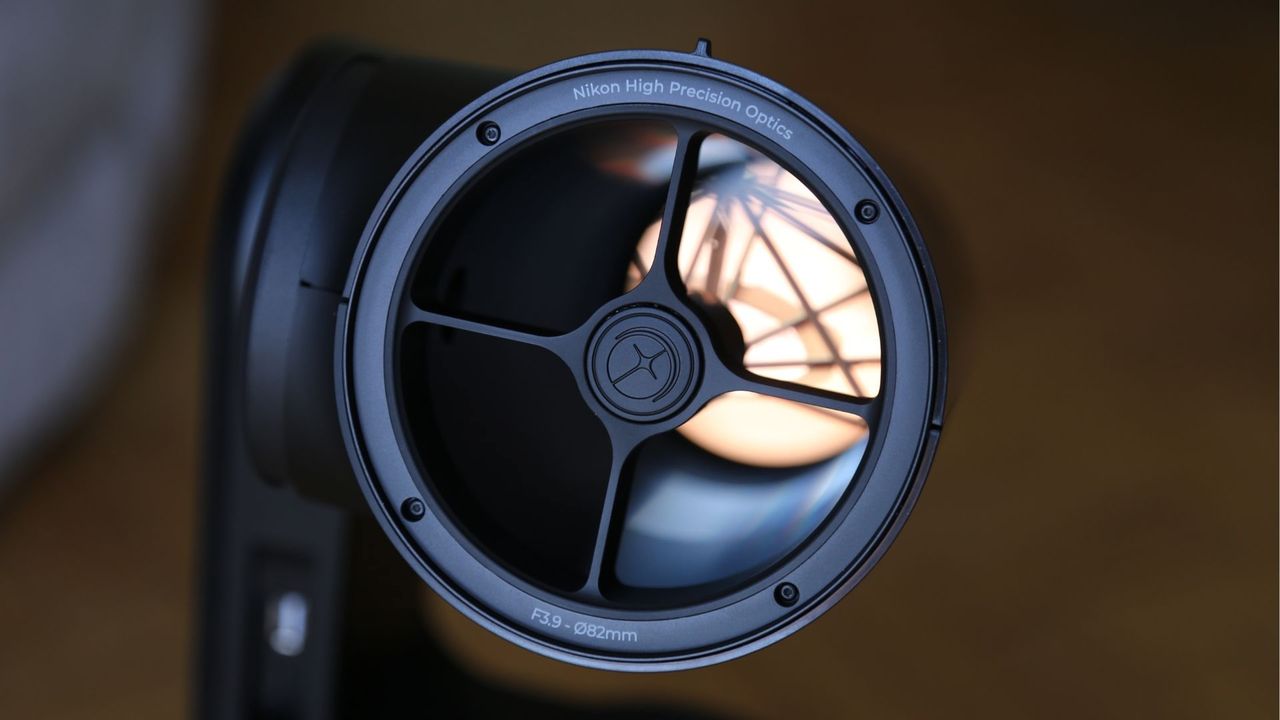
(Image credit: Jamie Carter)
T3 VerdictWith a peerless build quality, easy-to-store and use design, and deep black images even in light pollution, the sleek Unistellar Odyssey is perfect if you’re after a top-draw smart telescope but don’t find its lack of an eyepiece.Reasons to buy+Excellent images from light-polluted cities+Superb build quality+Easy-to-use app+Lighter than the step-up option+Great value for moneyReasons to avoid-Proprietary tripod adds unnecessary expense-Lacks resolution compared to step-up-Planet images are very basic-Battery lasts five hours
T3 VerdictWith a peerless build quality, easy-to-store and use design, and deep black images even in light pollution, the sleek Unistellar Odyssey is perfect if you’re after a top-draw smart telescope but don’t find its lack of an eyepiece.
T3 Verdict
With a peerless build quality, easy-to-store and use design, and deep black images even in light pollution, the sleek Unistellar Odyssey is perfect if you’re after a top-draw smart telescope but don’t find its lack of an eyepiece.
Reasons to buy+Excellent images from light-polluted cities+Superb build quality+Easy-to-use app+Lighter than the step-up option+Great value for moneyReasons to avoid-Proprietary tripod adds unnecessary expense-Lacks resolution compared to step-up-Planet images are very basic-Battery lasts five hours
Reasons to buy+Excellent images from light-polluted cities+Superb build quality+Easy-to-use app+Lighter than the step-up option+Great value for money
Excellent images from light-polluted cities
Superb build quality
Easy-to-use app
Lighter than the step-up option
Great value for money
Reasons to avoid-Proprietary tripod adds unnecessary expense-Lacks resolution compared to step-up-Planet images are very basic-Battery lasts five hours
Proprietary tripod adds unnecessary expense
Lacks resolution compared to step-up
Planet images are very basic
Battery lasts five hours
Why you can trust T3Our expert reviewers spend hours testing and comparing products and services so you can choose the best for you.Find out more about how we test.
Why you can trust T3Our expert reviewers spend hours testing and comparing products and services so you can choose the best for you.Find out more about how we test.
Jump to category:Price and availabilitySpecificationsFeatures and what’s newSetup and useVerdictAlso consider
Jump to category:Price and availabilitySpecificationsFeatures and what’s newSetup and useVerdictAlso consider
Unistellar Odyssey deals
$2,299View$2,299.99View$2,499View
$2,299View
$2,299View



$2,299View
$2,299
$2,299
$2,299.99View
$2,299.99View
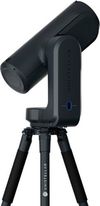

$2,299.99View
$2,299.99
$2,299.99
$2,499View
$2,499View


$2,499View
$2,499
$2,499
Show More Deals
Show More Deals
We check over 250 million products every day for the best prices
The Unistellar Odyssey is the definitive smart telescope in many ways and is a strong contender for anyone searching for the best telescope on the market. Crucially, it has no eyepiece, which makes it completely different from the kinds of optical telescopes most of us have used to look at objects in the night sky at some point, positioning it as one of thebest beginner telescopesfor those new to astronomy.
The Odyssey is essentially a mid-range option in the smart telescope market. Marseille, France-based Unistellar has been selling theUnistellar eVscope 2andUnistellar eVscope eQuinox 2for a few years but is now expanding its range.
With its flagship models promoted other than its ‘Expert’ range, the Odyssey forms the basis of its new ‘Discovery’ range alongside a step-up option, the Odyssey Pro (which has a higher-resolution camera sensor and a Nikon-made electronic eyepiece).
Its ability to be used perfectly well in an urban backyard to do the kind of astronomy that’s otherwise impossible is incredible. Add imaging of the moon, sun, and even planets, and the Odyssey should have massive appeal for anyone who does not want the money-no-objectbest telescopebut rather the second-best—and most portable—smart telescope around.
Unistellar Odyssey review
Price and availability
Announcedat theCESin Las Vegas in January 2024, the Odyssey costs $2,099/£1,849 and is available to buy now directly fromUnistellar. Accessories include a backpack, which fits the Odyssey Pro and the Odyssey ($299/£269), and a solar filter, which costs $199/£179.
Specifications
(Image credit: Jamie Carter)
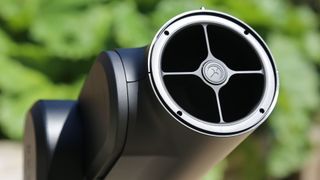
(Image credit: Jamie Carter)
Features and what’s new
Image1of6(Image credit: Jamie Carter)(Image credit: Jamie Carter)(Image credit: Jamie Carter)(Image credit: Jamie Carter)(Image credit: Jamie Carter)(Image credit: Jamie Carter)
Image1of6(Image credit: Jamie Carter)(Image credit: Jamie Carter)(Image credit: Jamie Carter)(Image credit: Jamie Carter)(Image credit: Jamie Carter)(Image credit: Jamie Carter)
Image1of6
(Image credit: Jamie Carter)(Image credit: Jamie Carter)(Image credit: Jamie Carter)(Image credit: Jamie Carter)(Image credit: Jamie Carter)(Image credit: Jamie Carter)
(Image credit: Jamie Carter)(Image credit: Jamie Carter)(Image credit: Jamie Carter)(Image credit: Jamie Carter)(Image credit: Jamie Carter)(Image credit: Jamie Carter)
(Image credit: Jamie Carter)
(Image credit: Jamie Carter)
(Image credit: Jamie Carter)
(Image credit: Jamie Carter)
(Image credit: Jamie Carter)
(Image credit: Jamie Carter)
(Image credit: Jamie Carter)
(Image credit: Jamie Carter)
(Image credit: Jamie Carter)
(Image credit: Jamie Carter)
(Image credit: Jamie Carter)
(Image credit: Jamie Carter)
(Image credit: Jamie Carter)
(Image credit: Jamie Carter)
(Image credit: Jamie Carter)
(Image credit: Jamie Carter)
(Image credit: Jamie Carter)
(Image credit: Jamie Carter)
(Image credit: Jamie Carter)
(Image credit: Jamie Carter)
(Image credit: Jamie Carter)
(Image credit: Jamie Carter)
(Image credit: Jamie Carter)
(Image credit: Jamie Carter)
(Image credit: Jamie Carter)
(Image credit: Jamie Carter)
(Image credit: Jamie Carter)
(Image credit: Jamie Carter)
(Image credit: Jamie Carter)
(Image credit: Jamie Carter)
Odyssey is an all-in-one astrophotography rig that automatically stacks long exposures of faint celestial objects to produce clear and colorful images in its smartphone app. It’s capable of 3.7 megapixels, compared to the Odyssey Pro’s 4.1 megapixels, with rivals ZWO Seestar S50 andVaonis Vespera IIoffering 2 megapixels and 8.3 megapixels, respectively.
However, comparing smart telescopes purely on pixels is unwise. The key to any optical device—and particularly any telescope—is how much light is captured. Here, the Odyssey easily outdoes its rivals.
(Image credit: Jamie Carter)

(Image credit: Jamie Carter)
That 85mm aperture puts it ahead of the ZWO Seestar S50 and Vaobuis Vespera II, both of which are 50 mm aperture refractor telescopes. This means Odyssey is better able to get closer to galaxies, globular clusters, and nebulae.
Crucially, its field of view is large enough for the sun and moon, the former done using an add-on solar filter. Unlike other smart telescopes, Odyssey can also take images of planets. It’s able to because it can shoot in an entirely different way.
Whereas all smart telescopes take long exposure images and stack them in real-time to create ever cleaner-looking, more impressive pictures of galaxies and other faint objects, only Unistellar smart telescopes can take multiple super-quick frames that planetary imaging demands.
Setup and use
Image1of3(Image credit: Jamie Carter)(Image credit: Jamie Carter)(Image credit: Jamie Carter)
Image1of3(Image credit: Jamie Carter)(Image credit: Jamie Carter)(Image credit: Jamie Carter)
Image1of3
(Image credit: Jamie Carter)(Image credit: Jamie Carter)(Image credit: Jamie Carter)
(Image credit: Jamie Carter)(Image credit: Jamie Carter)(Image credit: Jamie Carter)
(Image credit: Jamie Carter)
(Image credit: Jamie Carter)
(Image credit: Jamie Carter)
(Image credit: Jamie Carter)
(Image credit: Jamie Carter)
(Image credit: Jamie Carter)
(Image credit: Jamie Carter)
(Image credit: Jamie Carter)
(Image credit: Jamie Carter)
(Image credit: Jamie Carter)
(Image credit: Jamie Carter)
(Image credit: Jamie Carter)
(Image credit: Jamie Carter)
(Image credit: Jamie Carter)
(Image credit: Jamie Carter)
All are theoretically within Odyssey’s field of view at that specific time, though it doesn’t consider the telescope’s physical position. For example, in your backyard, you may have a three-story building behind you, blocking half of the sky. For those who know roughly where many of the celestial objects are, it would be nice to have an option to select celestial targets using a virtual planetarium within the app. It could also help beginners in their quest to learn how to navigate the night sky.
One of Odyssey’s standout features is auto-focusing capability; as it locks on to an object after slewing across the night sky, it takes time to center it in its field of view before adjusting its focus. Press the ‘enhanced vision’ button on the app, and it takes long exposure – typically around 10 seconds – and immediately begins stacking them, using a built-in image algorithm to eliminate noise and increase contrast and color.
(Image credit: Jamie Carter)
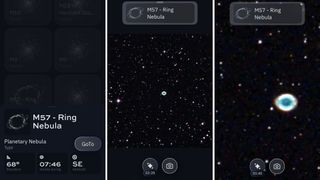
(Image credit: Jamie Carter)
It impresses across the board, with globular clusters, open clusters, and galaxies all looking fabulous. However, some objects with a lot of collective brightness – notably M31, the Andromeda galaxy – did seem a tad over-exposed.
What I loved most about the images (besides them being presented in various shapes, including one for social media complete with a caption and image parameters) is their inky blackness, which is down toUnistellar’s ‘deep dark’technology. On the other hand, images of planets did not impress, with Saturn lacking any definition in my tests.
Some won’t like that Odyssey ships with an expensive-looking, rock-solid proprietary tripod when any simple photographic tripod would do the same. Ditto that Odyssey needs charging with a proprietary USB-C terminated power cable. The five-hour battery is a little ungenerous, too.
However, there’s so much to love about the Odyssey, which produces colorful nebula images against beautiful black backgrounds even under heavy light pollution. If you’re after a smart telescope with the incredible build quality and excellent performance even when used on a city center balcony or backyard, Odyssey could be for you.
Verdict
(Image credit: Jamie Carter)
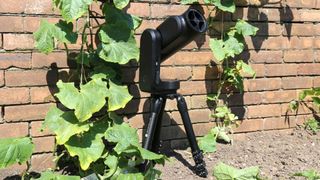
(Image credit: Jamie Carter)
The Unistellar Odyssey smart telescope offers a compelling option for amateur astronomers and astrophotography enthusiasts after a product with peerless build quality and the latest image algorithms that’s nevertheless not saddled with a top-of-the-line price tag.
Including a sturdy tripod that’s typical of Odyssey’s bulletproof build quality, this smart telescope produces vibrant, contrasty images of celestial objects, making it an excellent choice for urban stargazers in light-polluted environments.
It’s not perfect – we missed the extra resolution of the step-up Odyssey Pro, and planetary imaging is middling in quality – but Odyssey’s ease of use, advanced features and mostly incredible images of deep-sky objects make it a smart choice.
Also consider
If the Unistellar Odyssey isn’t for you, there are many other smart telescopes to consider. For example, theUnistellar eVscope eQuinox II, with its larger 4.5”/114mm aperture and higher megapixel count (at 6.2 MP), provides an upgrade option at a higher price point. However, it does weigh a hefty 19.8 lbs / 9kg.
For those on a much tighter budget or anyone after an ultra-portable smart telescope, theZWO Seestar S50is an affordable alternative with similar functionalities, albeit with smaller optics, a lesser build quality and fewer image algorithms. At just 5.5lbs/2.5kg, it’s incredibly portable.
Unistellar Odyssey: Price Comparison
$2,299View$2,299View$2,299.99View$2,499View$2,499View
$2,299View
$2,299View



$2,299View
$2,299
$2,299
$2,299View
$2,299View
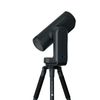

$2,299View
$2,299
$2,299
$2,299.99View
$2,299.99View


$2,299.99View
$2,299.99
$2,299.99
$2,499View
$2,499View


$2,499View
$2,499
$2,499
$2,499View
$2,499View


$2,499View
$2,499
$2,499
We check over 250 million products every day for the best prices
Sign up to the T3 newsletter for smarter living straight to your inbox
Get all the latest news, reviews, deals and buying guides on gorgeous tech, home and active products from the T3 experts

Netflix is making a huge surprise change for hit spy show’s new seasonThe Recruit is taking a global trip this time out
The Recruit is taking a global trip this time out

This case turns your iPhone or Android phone into an e-reader, but there’s a catchActually, there are a couple…
Actually, there are a couple…

Traeger’s new Woodridge pellet barbecues have got me excited for grilling seasonTraeger debuts three new wood pellet grills
Traeger debuts three new wood pellet grills

